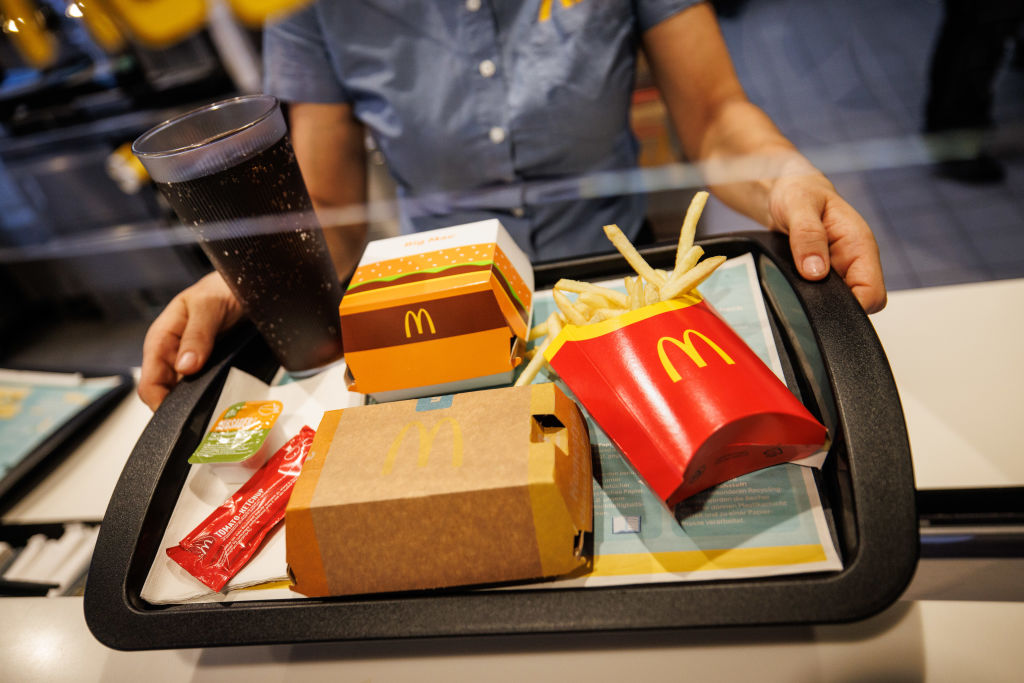Americans are still turning their backs on McDonald’s
(CNN) — Inflation has caught up with McDonald’s, and budget-conscious Americans are looking elsewhere for their fast-food fix. But McDonald’s believes it has a solution: Value meals.
McDonald’s on Monday reported that sales at US stores open at least a year fell 0.7% last quarter from the same period a year earlier, dragged down by fewer customers going to the fast-food company’s restaurants. McDonald’s isn’t alone: Starbucks, Burger King, Wendy’s and other rivals are also reporting less foot traffic and lower overall sales as consumers pull back their spending on food away from home.
The tough environment for McDonald’s wasn’t limited to the United States: Sales at stores open for at least a year fell 1% globally. It’s the first time sales fell by that measure since the last quarter of 2020.
Several factors were operating against McDonald’s this past quarter, including a tough comparison to last year. In the same quarter a year ago, McDonald’s got a 10.3% sales boost, mostly attributed to its viral Grimace shake — a purple, sugar-loaded drink in honor of Grimace’s “birthday.” The shake became a sensation after TikTok users posted videos of themselves pretending to die after drinking the shake.
But McDonald’s also has said for the past several quarters that some customers — particularly low-wage earners — are revolting against what many see as bad value.
“Beginning last year we warned of a more discriminating consumer, particularly among lower income households — and as this year progressed, those pressures have deepened and broadened,” said CEO Chris Kempczinski on a conference call with investors Monday morning.
So the company at its March investor day unveiled its new strategic plan, dubbed “Accelerating the Arches,” to lure back price-conscious customers. The plan focuses on value meal plans like the popular $5 meal introduced earlier this summer.
Those meals, which have shown early signs of popularity, hadn’t fully taken effect until recent weeks and weren’t fully baked into last quarter’s results. The $5 meal deal sales have exceeded expectations, the company said Monday. But Kempczinski said on the call that the company has more work to do, noting, “It’s clear that our value leadership gap has recently shrunk.”
“We are confident that ‘Accelerating the Arches’ is the right playbook for our business and as consumers are more discriminating with their spend, we are focused on the outstanding execution of delivering reliable, everyday value and accelerating strategic growth drivers like chicken and loyalty,” said Kempczinski in a statement.
Kempczinski also said McDonald’s will continue to innovate and change as customer demands shift. He pointed to McDonald’s new emphasis on chicken, which is now on par with beef sales at restaurants. And the company is testing out a new burger, called the Big Arch, which features two patties, cheese, crispy topping and tangy sauce.
“The hallmark of a great company is its ability to perform in good times and in bad, and we are resolved to reignite share growth in all our major markets regardless of the prevailing market conditions,” Kempczinski said on the investor call. “This won’t happen overnight. But it’ll happen.”
Supersized customer anger
For the first couple years of America’s inflation crisis, restaurants and food companies like McDonald’s and Coca-Cola said consumers were responding well to constant price increases and were willing to shell out more for their favorite meals, snacks and treats. But the tide began to turn last year. McDonald’s then reported what has become a trend for the restaurant and its competitors: Customers saying no to higher prices.
Food prices have continued to rise over the past year, but most of that increase has come from food away from home — that is, restaurants and fast-food locations — rather than the grocery store. That means dining out has become something of a luxury for some Americans.
McDonald’s in particular, has been the focus of some consumers’ ire. A viral social media post last year showing an $18 Big Mac meal set off an online backlash to what many customers believed was corporate greed making inflation worse for everyday Americans. It turned out to be a single rest stop in Connecticut that had posted that price, which is double the national average. McDonald’s president has since apologized — and urged franchisees not to go rogue anymore.
Whether or not that viral post was the final straw for McDonald’s customers, Americans have been punishing the company ever since. Sales have been sinking, and the company’s profit margin, once rising steadily in the post-pandemic years, has fallen back to where it was pre-Covid. The company on Monday said prices keep rising, but as it absorbs some of that additional cost, McDonald’s will continue to look for ways to grow its profit — even as customers demand more value.
McDonald’s (MCD) stock, which rose less than 1% in premarket trading Monday, has fallen 15% this year, missing out on a larger market rally.
